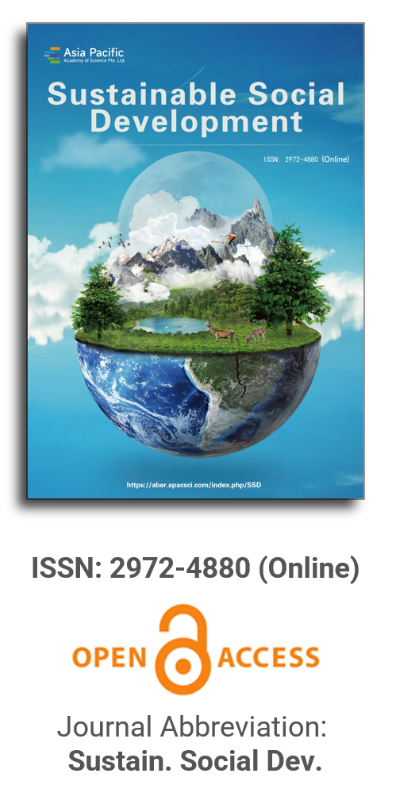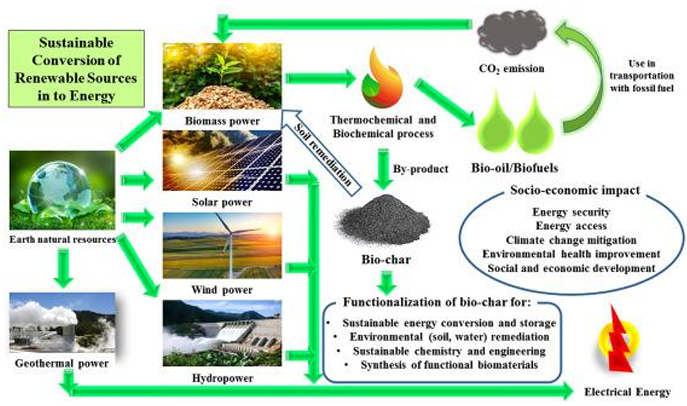
Asia Pacific Academy of Science Pte. Ltd. (APACSCI) specializes in international journal publishing. APACSCI adopts the open access publishing model and provides an important communication bridge for academic groups whose interest fields include engineering, technology, medicine, computer, mathematics, agriculture and forestry, and environment.

Analyzing the factors affecting the use behavior of the SIRADI system through behavioral intention as the mediating variable using the UTAUT 2 model
Vol 1, Issue 2, 2023
Download PDF
Abstract
This study aimed to examine the effects of the independent variables, i.e., performance expectancy, effort expectancy, social influence, facilitating conditions, and habit, on the dependent variable, SIRADI’s use of behavior through behavioral intention as a mediating variable. The population was 350 Department of Economics Education students, and the Slovin formula calculated 187 respondents. Data are collected by distributing questionnaires and analyzed using SEM (Structural Equation Model) with the Smart-PLS 3.3 application. The results showed that the study model used was valid and reliable. Based on the hypothesis test, it was found that of the 13 hypotheses, eight were accepted and five were rejected. Social influence has the most significant effect on behavioral intention at 40.4%. Habit has the most significant effect on SIRADI’s use behavior, at 32.7%. Then, behavioral intention as a mediating decreases the effect of habit on SIRADI’s user behavior by 13.4%. This study concludes that there is a partial effect of performance expectancy, effort expectancy, social influence, facilitating conditions, and habits on SIRADI’s use behavior. This study suggests that the higher education institution needs to review the development of services at SIRADI to fulfill the expectations of its users.
Keywords
References
- Venkatesh V, Morris MG, Davis GB, Davis FD. User acceptance of information technology: Toward a unified view. MIS Quarterly 2003; 27(3): 425–478. doi: 10.2307/30036540
- Bharata W, Widyaningrum PW. Analysis of acceptance and use of academic information systems through the development of a study link model for students at the faculty of economics, Muhammadiyah University of Ponorogo (Indonesian). Optimal: Jurnal Ekonomi Dan Kewirausahaan 2017; 11(2): 171–187. doi: 10.33558/optimal.v11i2.751
- Wibowo A. Study of information system user behavior using the technology acceptance model (TAM) approach (Indonesian). Available: https://www.researchgate.net/publication/228997997 (accessed on 4 September 2023).
- Handayani T, Sudiana S. Analysis of the application of the UTAUT model (Unified Theory of Acceptance and Use of Technology) on information system user behavior (case study: academic information system at Sttnas Yogyakarta) (Indonesian). Angkasa: Jurnal Ilmiah Bidang Teknologi 2015; 7(2): 159–165. doi: 10.28989/angkasa.v7i2.159
- Venkatesh V, Thong JYL, Xu X. Consumer acceptance and use of information technology: Extending the unified theory of acceptance and use of technology. MIS Quarterly 2012; 36(1): 157–178. doi: 10.1109/MWSYM.2015.7167037
- Nair PK, Ali F, Leong LC. Factors affecting acceptance & use of ReWIND: Validating the extended unified theory of acceptance and use of technology. Interactive Technology and Smart Education 2015; 12(3): 183–201. doi: 10.1108/ITSE-02-2015-0001
- Tusyanah T, Wahyudin A, Khafid M. Analyzing factors affecting the behavioral intention to use e-wallet with the UTAUT model with experience as moderating variable. Journal of Economic Education 2021; 10(1): 113–123. doi: 10.15294/JEEC.V9I2.44824
- Zwain AAA. Technological innovativeness and information quality as neoteric predictors of users’ acceptance of learning management system: An expansion of UTAUT 2. Interactive Technology and Smart Education 2019; 16(3): 239–254. doi: 10.1108/ITSE-09-2018-0065
- Arif M, Ameen K, Rafiq M. Factors affecting student use of Web-based services: Application of UTAUT in the Pakistani context. Electronic Library 2018; 36(3): 518–534. doi: 10.1108/EL-06-2016-0129
- Gunasinghe A, Hamid JA, Khatibi A, Azam SMF. The adequacy of UTAUT-3 in interpreting academician’s adoption of e-Learning in higher education environments. Interactive Technology and Smart Education 2020; 17(1): 86–106. doi: 10.1108/ITSE-05-2019-0020
- Bashir NAA. Application of the UTAUT 2 model to determine the factors that influence the use of SIORTU (Indonesian). Elinvo (Electronics, Informatics, and Vocational Education) 2020; 5(1): 42–51. doi: 10.21831/elinvo.v5i1.30636
- Perinotto ARC, Araújo SM, Borges VPC, et al. The development of the hospitality sector facing the digital challenge. Behavioral Sciences 2022; 12(6): 192. doi: 10.3390/bs12060192
- Hsu H. The acceptance of moodle: An empirical study based on UTAUT. Creative Education 2012; 3(8): 44–46. doi: 10.4236/ce.2012.38b010
- Banjuradja AM, Sunarto MJD, Wulandari SHE. Faktor-faktor yang berpengaruh terhadap penerimaan aplikasi brilian dengan model UTAUT. JSIKA 2015; 4(2): 1–10.
- Nuari ES, Nurkhin A, Kardoyo K. Analysis of determinants of edmodo utilization using the unified theory of acceptance and use of technology (UTAUT) (Indonesian). Jurnal Pendidikan Akuntansi Indonesia 2019; 17(1): 57–73. doi: 10.21831/jpai.v17i1.26337
- Abdilla W, Hartono J. Partial Least Square (PLS) : Alternatif Structural Equation Modeling (SEM) Dalam Penelitian Bisnis, 1st ed. Yogyakarta: Andi Offset; 2015.
- Ghozali I. Multivariate Analysis Application with SPSS Program (Indonesian). Badan Penerbit Universitas Diponegoro; 2011.
- Solimun I, Fernandes AAR, Nurjannah. Multivariate Statistical Method Structural Equation Modeling (SEM) WarpPLS Approach (Indonesian). Universitas Brawijaya Press; 2017.
- Ghozali I. Multivariate Analysis Application with the IBM SPSS 21 Update PLS Regression Program (Indonesian). Badan Penerbit Universitas Diponegoro; 2013.
- Isaias P, Reis F, Coutinho C, Lencastre JA. Empathic technologies for distance/mobile learning: An empirical study based on the unified theory of acceptance and use of technology (UTAUT). Interactive Technology and Smart Education 2017; 14(2): 159–180. doi: 10.1108/ITSE-02-2017-0014
- Widanengsih E. Application of the unified theory of acceptance and use of technology model to measure user behavior of accounting applications in small and medium enterprises (Indonesian). Journal of Industrial Engineering & Management 2021; 2(3): 146–160. doi: 10.7777/jiemar.v2i3.155
- Raja Yusof RJ, Qazi A, Inayat I. Student real-time visualization system in classroom using RFID based on UTAUT model. IJILT 2017; 34(3):274–288. doi: 10.1108/ijilt-03-2017-0018
- Chao CM. Factors determining the behavioral intention to use mobile learning: An application and extension of the UTAUT model. Frontiers in Psychology 2019; 10. doi: 10.3389/fpsyg.2019.01652
- Haris CA, WA BS, Nasiri A. Application of the UTAUT 2 model to evaluate the teacher room application (Indonesian). Jurnal Teknologi Informasi 2019; 3(2): 192. doi: 10.36294/jurti.v3i2.1085
- Samsudeen SN, Mohamed R. University students’ intention to use e-learning systems. Interactive Technology and Smart Education 2019; 16(3): 219–238. doi: 10.1108/itse-11-2018-0092
- Fianu E, Blewett C, Ampong GO. Toward the development of a model of student usage of MOOCs. Education and Training 2020; 62(5): 521–541. doi: 10.1108/ET-11-2019-0262
- Tarhini A, Masa’deh R, Al-busaidi KA, et al. Factors influencing students’ adoption of e-learning: A structural equation modeling approach. Journal of International Education in Business 2017; 10(2): 164–182. doi: 10.1108/JIEB-09-2016-0032
- Hu S, Laxman K, Lee K. Exploring factors affecting academics’ adoption of emerging mobile technologies—An extended UTAUT perspective. Education and Information Technologies 2020; 25: 4615–4635. doi: 10.1007/s10639-020-10171-x
- Shivdas A, Menon DG, Nair CS. Antecedents of acceptance and use of a digital library system. The Electronic Library 2020; 38(1): 170-185. doi: 10.1108/el-03-2019-0074
- Sutanto S, Ghozali I, Handayani RS. Factors that influence the acceptance and use of regional financial management information systems (Sipkd) in the perspective of the unified theory of acceptance and use of technology 2 (UTAUT 2) in semarang regency (Indonesian). Jurnal Akuntansi Dan Auditing 2018; 15(1): 37–68. doi: 10.14710/jaa.15.1.37–68
- Susafa’ati. Measuring satisfaction with using the LSD AIR FREIGHT application with UTAUT method (Indonesian). J. Pilar Nusa Mandiri 2015; XI(2): 142–151.
- Leong GW, Ping TA, Muthuveloo R. Antecedents of behavioural intention to adopt internet of things in the context of smart city in Malaysia. Global Business & Management Research 2017; 9(4): 442–456.
- Khoirunnisak W. The implementation of unified theory of acceptance and user of technology (UTAUT) acceptance model to analysis the factors acceptance of lecturers to use share-its of e-learning. Institut Teknologi Sepuluh Nopember Surabaya; 2016.
- Rahmaningtyas W, Mulyono KB, Fidhyallah NF, Faslah R. Application of UTAUT (Unified Theory of Acceptance and Use of Technology) to understand the acceptance and use of the E-Learning System. International Journal of Advanced Science and Technology 2020; 29(4): 5051–5060.
- Mustaqim RN, Kusyanti A, Aryadita H. Analysis of factors that influence intention to use XYZ e-commerce using the UTAUT model (Unified Theory Acceptance and Use of Technology) (Indonesian). Jurnal Pengembangan Teknologi Informasi Dan Ilmu Komputer 2018; 2(7): 2584–2593.
- Ardiyanto F. Pengaruh performance expectancy, effort expectancy, social influence dan facilitating conditions terhadap use behavior melalui behavioral intention (Studi Kasus Implementasi Integrated Procure to Pay (I-P2P) di Pt Pertamina Ep Asset 4). Universitas Airlangga; 2020.
Supporting Agencies
Copyright (c) 2023 Muhammad Noor Rifqi Hidayat, Lyna Latifah, Tusyanah Tusyanah
License URL: https://creativecommons.org/licenses/by/4.0/

This site is licensed under a Creative Commons Attribution 4.0 International License (CC BY 4.0).

Prof. Kittisak Jermsittiparsert
University of City Island, Cyprus






It is with deep regret that we announce the cancellation of the Forum on Sustainable Social Development & Computing and Artificial Intelligence, originally scheduled for June 15, 2025.

